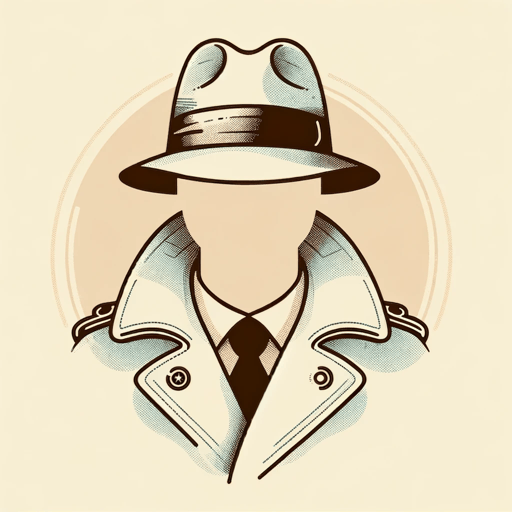41 pages • 1 hour read
Emil FerrisMy Favorite Thing Is Monsters
Fiction | Graphic Novel/Book | Adult | Published in 2017A modern alternative to SparkNotes and CliffsNotes, SuperSummary offers high-quality Study Guides with detailed chapter summaries and analysis of major themes, characters, and more.
Summary and Study Guide
Overview
Written by Emil Ferris and first published in 2015, My Favorite Thing Is Monsters is a fictional graphic novel based loosely on Ferris’s own childhood in 1960s Chicago. Before writing her first graphic novel, Ferris was a toy sculptor and illustrator. Writing My Favorite Thing Is Monsters acted as a form of therapy for Ferris as she recovered from a severe reaction to the West Nile Virus. Ferris had to make many sacrifices to create her masterpiece. It has won the Ignatz Award for Outstanding Graphic Novel in 2010, as well as three Eisner Awards in 2018. The graphic novel has been translated into French, Italian, Spanish, and German, and its sequel currently awaits publication.
This study guide utilizes the March 2021 publication of the graphic novel. Please note that the graphic novel addresses potentially triggering issues that include child abuse, trafficking, murder, and other instances of violence.
Plot Summary
My Favorite Thing Is Monsters takes place in 1968 Chicago and centers around the life of 10-year-old Karen Reyes. Karen is an intelligent and intuitive girl with an affliction for monsters, art, and family. The graphic novel acts as the pages of her diary, and the images within it are drawn by Karen as she recounts the events that unfold. In the story’s exposition, Karen awakes from a terrible dream in which her monster-like self, hair and fanged, is not only rejected by people around her, but hunted. As they begin calling for the death of this howling beast, Karen awakes. She finds solace in her mother, a single parent of immigrants who never seems to falter. Karen sees her mother as a haven, and feels similarly about her brother, Deeze, who introduces her to art and horror. Deeze, however, has an unstable temper, is promiscuous, and drinks heavily.
The very next morning, Karen’s neighbor Anka Silverberg is found dead in her bed. The death is ruled a suicide, but neither her husband nor Karen is convinced. Karen requests a detective hat and coat from her brother, Deeze, and begins an investigation into what she believes is a murder. She begins by listening in on conversations between adults around her, observing and talking with neighbors, and using her knowledge of the paintings in the museum to formulate clues about what may have happened to Anka. During this time, Karen deals with several other problems as well. Karen is bullied at school for being interested in horror as well as for having a diverse racial background, and her only friend is fickle, often acting like Karen does not exist. She soon finds out that her mother is dying of cancer, and this causes deep worry in her. At the same time, political problems are looming as Deeze may be drafted into Vietnam, Martin Luther King, Jr. is shot, and Anka’s memories of the Holocaust come flooding back into the present.
Karen receives her biggest lead when Anka’s husband, Sam, shares a tape recording of Anka testifying her account of her youth. Anka reveals that she was raised in a brothel by a mother who abused her and trafficked her at a young age. She was then sent to live with a pedophilic man, Herr Schutz. When the Nazis took over Germany, Anka, a Jewish woman, was sent to a labor camp. She escaped only because Schutz paid for her to leave and be sent to a university instead. Karen and Anka both spend their childhoods as outcasts who suffer greatly. Through Anka’s account, her artistic knowledge, and conversations she shares and overhears with family and neighbors, Karen comes to the staunch realization that the truth is difficult to handle. She turns out to be correct, when her brother Deeze admits one night to having killed Anka in a fit of jealous rage. In the end, Deeze’s admission inspires Karen to admit a truth of her own: that she is queer. The two accept each other, but when their mother dies, Deeze loses touch with reality and begins neglecting Karen. She is left to face the truths that she has learned on her own. In the final pages, Karen has a dream in which she meets her other brother, Victor, whom Deeze also murdered before Karen was born.
My Favorite Thing Is Monsters is a bildungsroman, a mystery/thriller, and a graphic novel. Through Karen’s story, the author explores themes of truth, alienation, and the power of art to heal and birth understanding. As Karen solves the mysteries of Anka’s death and her family’s past, she learns that the monsters in her fantasies are much less evil than the monsters that haunt the real world.
Featured Collections
Appearance Versus Reality
View Collection
Art
View Collection
Beauty
View Collection
Books About Art
View Collection
Brothers & Sisters
View Collection
Childhood & Youth
View Collection
Class
View Collection
Class
View Collection
Coming-of-Age Journeys
View Collection
Community
View Collection
Daughters & Sons
View Collection
Family
View Collection
Fathers
View Collection
Fear
View Collection
Friendship
View Collection
Graphic Novels & Books
View Collection
Grief
View Collection
Historical Fiction
View Collection
Horror, Thrillers, & Suspense
View Collection
LGBTQ Literature
View Collection
Mortality & Death
View Collection
Mothers
View Collection
Mystery & Crime
View Collection
Popular Study Guides
View Collection
Pride Month Reads
View Collection
Pride & Shame
View Collection
Safety & Danger
View Collection

